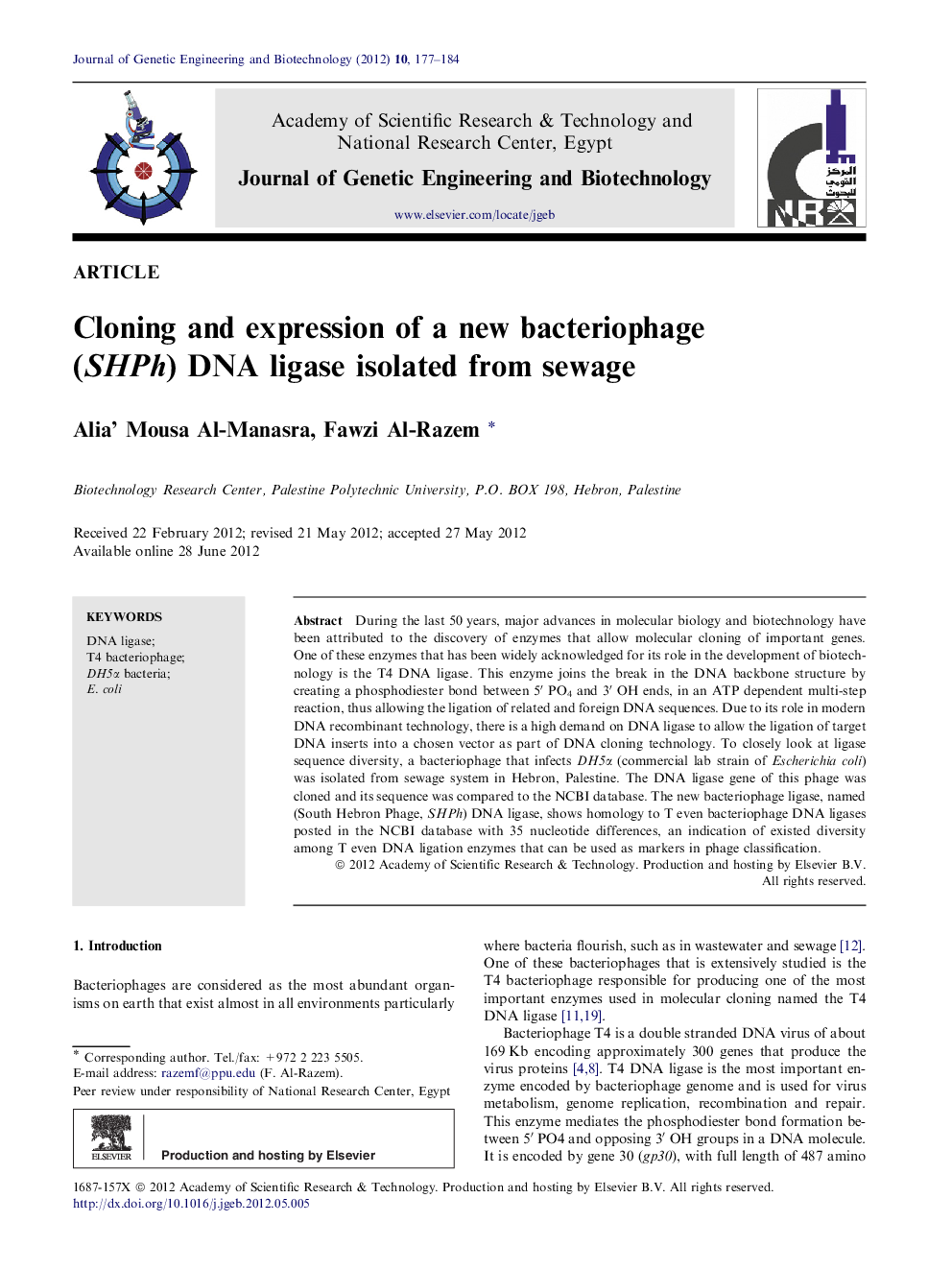| Article ID | Journal | Published Year | Pages | File Type |
|---|---|---|---|---|
| 2087927 | Journal of Genetic Engineering and Biotechnology | 2012 | 8 Pages |
During the last 50 years, major advances in molecular biology and biotechnology have been attributed to the discovery of enzymes that allow molecular cloning of important genes. One of these enzymes that has been widely acknowledged for its role in the development of biotechnology is the T4 DNA ligase. This enzyme joins the break in the DNA backbone structure by creating a phosphodiester bond between 5′ PO4 and 3′ OH ends, in an ATP dependent multi-step reaction, thus allowing the ligation of related and foreign DNA sequences. Due to its role in modern DNA recombinant technology, there is a high demand on DNA ligase to allow the ligation of target DNA inserts into a chosen vector as part of DNA cloning technology. To closely look at ligase sequence diversity, a bacteriophage that infects DH5α (commercial lab strain of Escherichia coli) was isolated from sewage system in Hebron, Palestine. The DNA ligase gene of this phage was cloned and its sequence was compared to the NCBI database. The new bacteriophage ligase, named (South Hebron Phage, SHPh) DNA ligase, shows homology to T even bacteriophage DNA ligases posted in the NCBI database with 35 nucleotide differences, an indication of existed diversity among T even DNA ligation enzymes that can be used as markers in phage classification.
